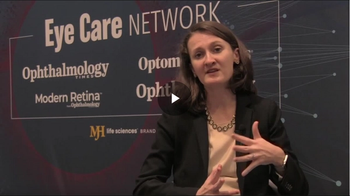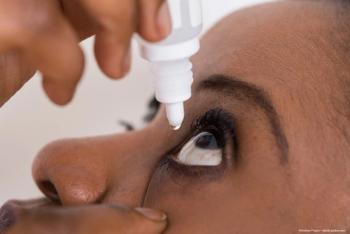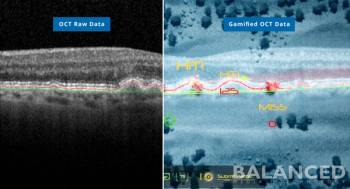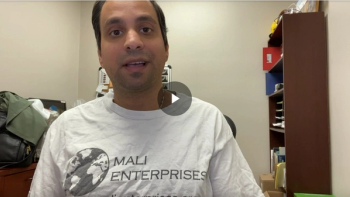
This study showed that an investigational subretinal implant, CPCB-RPE1, containing allogeneic human embryonic stem cell-derived RPE cells, was safe and well-tolerated by patients with dry AMD.

This study showed that an investigational subretinal implant, CPCB-RPE1, containing allogeneic human embryonic stem cell-derived RPE cells, was safe and well-tolerated by patients with dry AMD.

A once-daily oral drug targets inflammatory processes and thus far has been found to be well tolerated in a phase 2 safety trial.

The latest invention from Mark S. Humayun, MD, PhD, brings hope to sufferers of age-related macular degeneration, a common type of blindness.

NGM621 is a monoclonal antibody product candidate engineered to potently inhibit complement C3 for the treatment of patients with geographic atrophy secondary to age-related macular degeneration.

Dr. Katherine Talcott discusses baseline factors—CST thickness, hemoglobin A1C, and baseline vision—and their effects on DME resolution.

Cleveland Eye Bank Foundation (CEBF) will feature nine researchers from three eye institutions on February 15, from 3 to 5 pm Eastern, for its second annual virtual vision research symposium.

The FDA has approved the first generic of cyclosporine ophthalmic emulsion (Restasis; Allergan) 0.05% single-use vials of eye drops to increase tear production in patients with dry eye disease.

A team of investigators has conducted ocular pharmacokinetic studies, including metabolism, providing valuable information for ocular drug development.

Center for Neuronal Longevity brings together the research power of the Keck School of Medicine of USC, USC Viterbi School of Engineering, and the USC School of Pharmacy to tackle neurodegenerative diseases of the eye and brain.

Investigators search for a link between transient ischemic attacks and changes in the retina.

A study finds acceptable outcomes, vision and microperimetry improvements at higher doses.

Work by a team of investigators is shedding light on the severity for gene variants and establishing outcome measures for therapeutic trials.

A University of California Davis study shows that small serving of the fruit increased protective pigments in the eye.

A partnership that includes BALANCED Media|Technology, the Retina Foundation of the Southwest and Southern Methodist University is seeking a patent for machine learning software for OCT images aids in identity progression and treatment options.

Joshua Mali, MD, talks about how the FDA approval of faricimab will change the treatment landscape for wet AMD and DME.

Genentech’s treatment of faricimab is the first and only FDA-approved medicine targeting two distinct pathways, angiopoietin (Ang)-2 and vascular endothelial growth factor (VEGF)-A, that often cause retinal diseases that may cause visual loss.

Nanoscope Therapeutics has received IND clearance from the FDA to begin a Phase 2 trial of its Multi-Characteristic Opsin ambient-light activatable optogenetic monotherapy to restore vision in Stargardt patients.

A team of investigators are working on a simple test that may someday identify those who can stop therapy.

Across four studies, about half of eligible faricimab patients were able to go 4 months between treatments, and approximately three-quarters could be treated every 3 months or longer. Two papers published in The Lancet highlight one-year results.

The historic Eye Institute rings in 60 years of leadership in eye care research, education and clinical practice.

The meeting places a special emphasis on pharmacotherapies in the pipeline for the treatment of neovascular exudative diseases of the eye and how they will affect clinical practice and Medicare.

Approach shows potential as a promising second-line screening tool for patients with diabetes.

According to the company, biped.ai includes a comfortable and lightweight collar fitted with 3D cameras that continuously monitor a 170° field of view for the user detecting, tracking and predicting the trajectories of all surrounding elements a few seconds in advance.

Since joining the foundation in 2018, Menzo has been involved in the formation of the Retinal Degeneration Fund, the venture arm of Foundation Fighting Blindness.

The difference between retina’s biological age and person’s real age linked to heightened death risk, with a team of Australian investigators finding that evidence suggests the microvasculature in the retina may be a reliable indicator of the overall health of the body’s circulatory system and the brain.